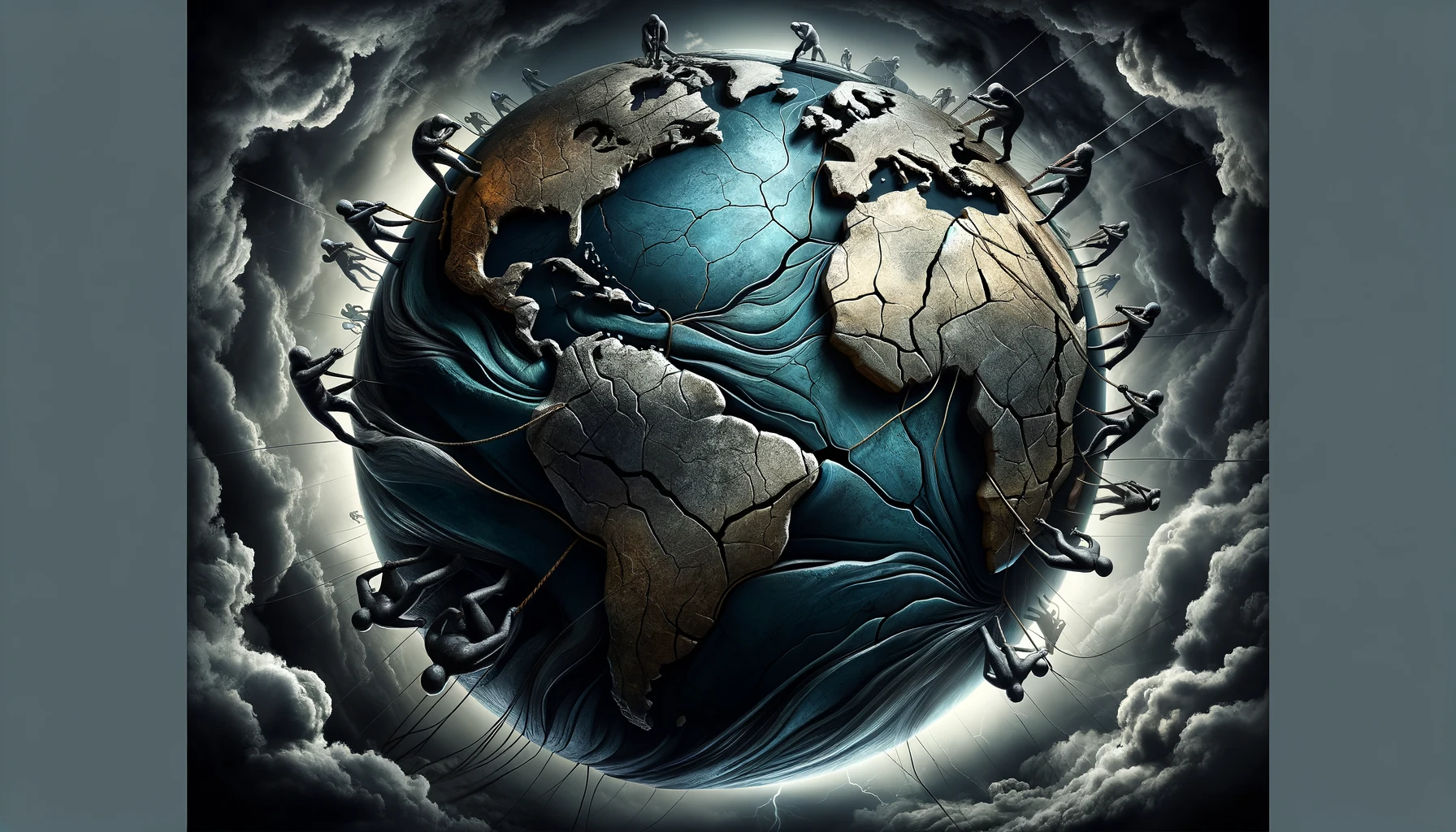1. Who will fight World War III
Written 21 August 2015

In his book, The Next 100 Years, George Friedman makes two major predictions which will affect the world for the decades to come: the collapse of the Russian Federation and the decline of China. Reading the economic or business news today would seem to suggest that Friedman was right when he wrote the book in 2009, a time when fears about American decline and Chinese rise were running high. Now that US economic power has risen again and Russia and China are facing economic stagnation and currency devaluations, many are turning to Friedman’s analysis.
Friedman makes further predictions: the remnants of Russia’s sphere in Europe, along with many of the republics within the country which will have now gained independence, will eventually be split between Poland and Turkey; Japan will gain significant territories and alliances in China and the rest of East Asia. During this time, the United States will remain a significant power with a strong maritime presence. However, since both Turkey and Japan will possess significant maritime interests as well, a Third World War will erupt which will include fronts on the ground, in the air and seas, and also in space. Poland will be American-aligned, while West Europe will become a backwater.
Of course, there are significant problems with George Friedman’s analysis, the major one being: where are the nukes? Certainly Japan, Turkey, and Poland will be strong and developed enough to create their own nuclear weapons systems; or if China and Russia were to collapse, that their nuclear weapons would be appropriated. This would deter any conflict which Friedman predicted and the cause of World War III is not desperate enough to warrant the use of nukes. Yet, this is not the only problem.
The Next 100 Years makes some very good analysis of the economic weaknesses of Russia and China. While Russia is heavily-dependent on energy exports, China is a “Paper Tiger” whose economic growth cannot be sustained for long periods of time. As oil prices inevitably decline (as suggested by the book), Russia will no longer have enough revenue to sustain its economy or its debts and will eventually collapse. Many Chinese regions, especially the so-called “Golden Coast”, will move more towards Japanese protection as the CCP aims to develop its interior poorer regions.
The book can thus be said to predict economic gloom and doom for Russia and China. Yet, this scenario seems unlikely, despite recent economic downturns.
Russia is already suffering from depressed oil prices and Western sanctions, but has yet to face collapse. The country is certainly facing economic contraction and a regional debt crisis. Yet Putin’s popularity rate is at an all-time high. His control of the Russian media will be sure to spin the crises that Russia will face as a direct effect of “economic aggression” against the country. As a matter of fact, there seems to already be an inverse relationship between the state of the economy and Putin’s popularity, suggesting that this trend will remain for some time. Indeed, the same trend occurred in Iran during the most recent sanctions regimes imposed by the West.
As China transitions from a production-based economy to a consumer-based one, it is bound to experience volatility and even financial crises. Yet this does not mean that the country will collapse and parts of it will be taken over by Japan. Chinese nationalism is still strong and any strong economic partnership between Japan and China’s regions will be seen as treasonous. Furthermore, while a greater increase in private spending will likely lead to further democratization, it does not necessarily augur social upheaval. It is certainly possible that the CCP will accept a modernization policy within its government like it did with its economy.
Let us accept the scenario that the current government of Russia and China collapse, simply for the sake of argument:
In Russia, nationalism will reach an all-time high and it is likely that a nationalist will accede to power, whether through legitimate means or through violence. There will be unrest in the regions to such a shift in ruling authority, with republics like Chechnya and Tatarstan being at greatest risk for conflict. The new ruling government’s first step would be take control of the nuclear weapons system, giving it a significant advantage over any competitors, and move to quash the separatist revolts in the regions, perhaps leading to mass deportations and ethnic cleansing. Any interventions from outside would be seriously warned off through the threat of a nuclear strike.
A similar scenario would take place in China, but in this case there will likely be a tussle between democratic and nationalist forces. Whoever wins will adopt some of the ideologies and practices of the other and will similarly take control of the nuclear weapons arsenal. Any foreign intervention would also be threatened and conflict in the regions would result. The economic problems which have resulted will pose many challenges to the new ruling party, but their control of the country’s nuclear weapons will ensure that it remains a vital power in the region.
It is therefore clear that the major powers in Eurasia will continue to be Russia and China, simply because of their nuclear weapons stockpile. If the worst case scenario were to occur, it would create complex security challenges in the region leading to nuclear proliferation, leading a much worse World War III scenario. Both Poland and Japan are likely to increase their influence in their respective regions regardless of whether the worst case scenario occurs or not, but they are unlikely to replace Russia or China (as a matter of fact, history has proven this).
When considering a World War III scenario, it would seem highly implausible to disregard Russia or China. Furthermore, their main challenge will certainly be the United States. In the next post, I will describe under what conditions or situations a catastrophic Third World War, involving nuclear weapons, will occur.